What is AI decisioning? A marketer’s guide to predictive campaign logic
Published on August 05, 2025/Last edited on August 05, 2025/6 min read
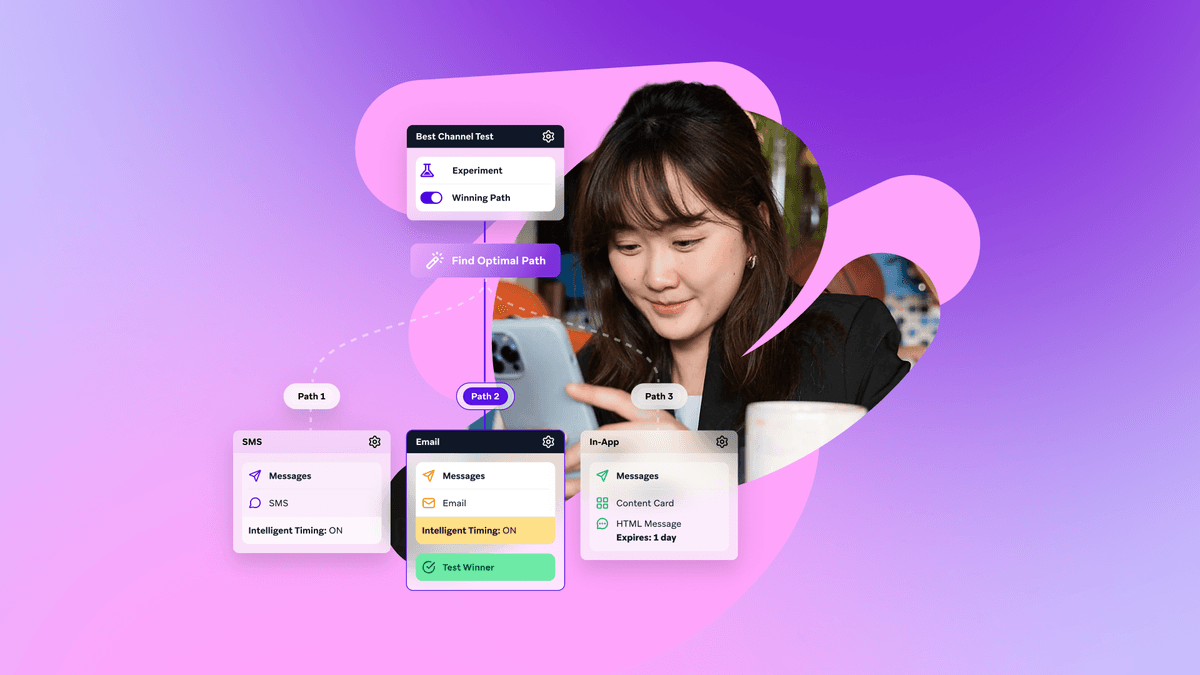
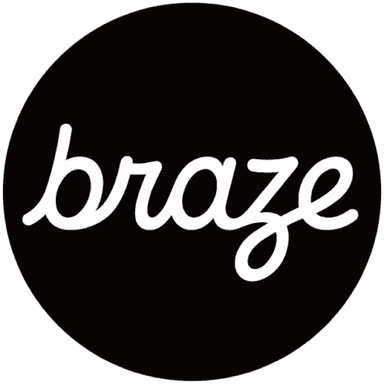
Team Braze
Artificial intelligence is reshaping how marketers work, with advancements in machine learning making it easier for brands to build lasting relationships with customers. But with any new tool comes too much hype, when most teams just want smarter, faster technology that makes a real difference.
That’s where AI decisioning comes in. It adds intelligence and personalization throughout the customer lifecycle, meaning less guesswork and more relevance.
In this guide, we’ll unpack how AI decisioning works, how it stacks up against traditional methods, and how to use it to personalize at scale.
Contents
- What is AI decisioning?
- AI decisioning expands upon segmentation
- How to use AI decisioning in a campaign
- Marketers work in partnership with AI agents
- From next-best guess to always-on intelligence
- Final thoughts
- FAQs about AI decisioning
What is AI decisioning?
AI decisioning uses reinforcement learning models to understand individual customer behaviors, make decisions, and take action autonomously to achieve a specific goal. Rather than following predefined paths—like “if a customer abandons their cart, send this reminder email after 24 hours”—AI decisioning uses data and agentic AI to personalize the touchpoints that each customer will prefer. What is best for one customer might not be best for another; by understanding individual preferences, marketers have a better chance of increasing customer lifetime value and deepening relationships because AI decisioning constantly learns what’s best for individuals.
AI decisioning expands upon segmentation
Expanding upon existing segmentation practices to AI decisioning creates a competitive advantage for marketers by creating deeper connections between brand and customer. AI decisioning leverages reinforcement learning to analyze vast amounts of data and identify patterns that may not be immediately apparent through traditional methods. While basic segmentation typically relies on predefined criteria—such as demographics or past behaviors—to categorize users into static groups, AI decisioning dynamically learns from customer profiles, constant experimentation, and past interactions for more nuanced and relevant communications at scale. This means that rather than simply targeting a group of users with similar characteristics, AI decisioning can tailor messages and experiences to individual preferences and behaviors at the 1:1 level, creating better experiences that enhance engagement and improve conversion rates.
Additionally, AI decisioning continuously learns from user interactions, refining its models to optimize future decisions. This iterative process helps brands respond to evolving customer needs more effectively and speak to each customer in a way that is more relevant for them. By employing AI decisioning, organizations can create highly personalized experiences that resonate on a deeper level, often leading to higher retention rates and fostering brand loyalty.
Where many journeys are rigid, AI decisioning is responsive and can help personalize at scale. This can make any communication feel far more relevant and aligned with each customer’s journey.
How to use AI decisioning in a campaign
AI decisioning introduces intelligence at key points in a customer journey—deciding when to trigger a message, what path to follow, and which channel to use, and what messages each customer may prefer. Instead of relying on pre-defined logic, it brings flexibility and personalization to campaign flows, making them more responsive to each individual.
Personalized journeys that respond to each customer
Traditional campaigns wait for a specific pre-defined action—like a cart abandonment—before responding. AI decisioning takes a more proactive approach. It can personalize journeys based on specific individual attributes like high likelihood to convert, or early signs of churn. This makes it possible to act before a moment is missed.
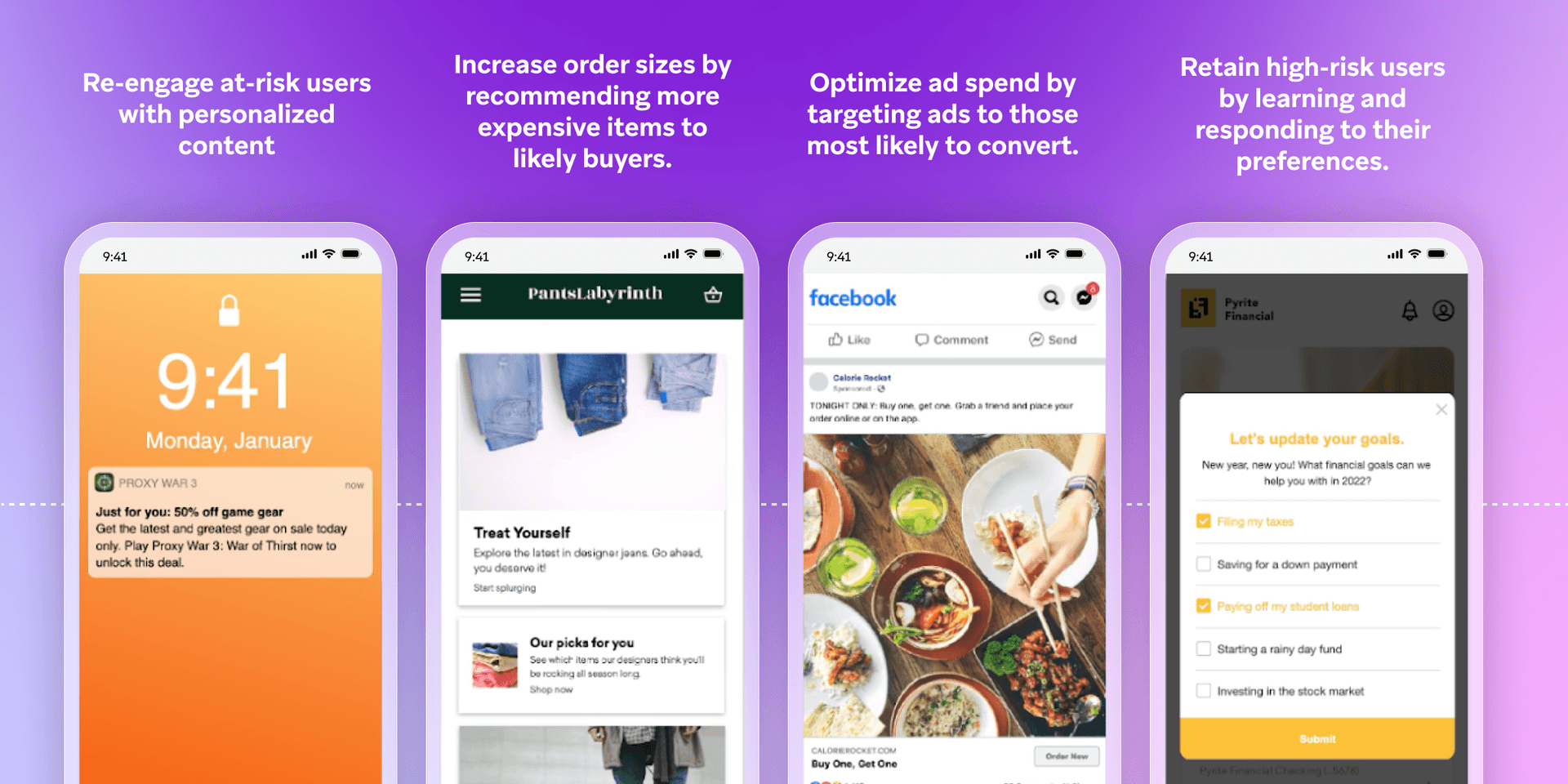
Timing of messages can also be refined. Instead of sending messages at the same time for everyone, optimize your messaging to when each person is most likely to open or click or perform any marketer-specific action, and send accordingly.
Dynamic paths that adapt in real time
Since individual customers don’t respond to the same campaign or message the same way, marketers should personalize experiences on a 1:1 basis, based on what’s most likely to lead to a conversion. For example, send messages based on whether they’re more likely to respond to a specific discount, which product recommendation a customer would prefer, or what they are looking for in a re-engagement touchpoint.
This kind of logic reduces the need for guesswork or manually building dozens of journey branches. The system decides the best experience, based on who they are as an individual.
From next-best guess to always-on intelligence
In a Braze webinar on AI decisioning, VP and Head of AI Decisioning, George Khachatryan, summed up a core marketing challenge for those companies relying on predictive AI: “It’s not next best action—it’s next best guess.” While prediction tells you what’s most likely to happen, decisioning makes the best decision based on what’s most likely to happen.
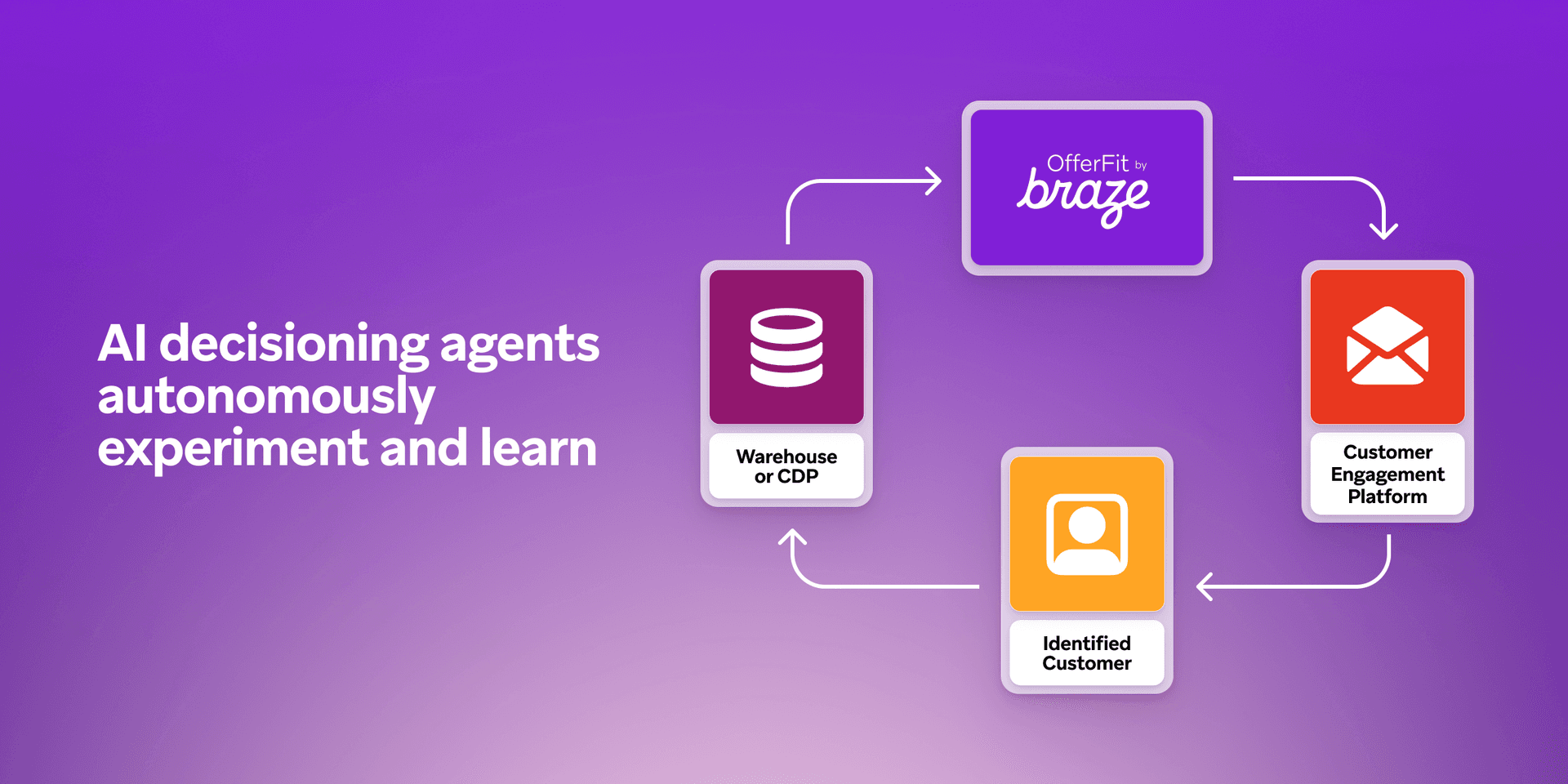
That’s where AI decisioning shifts the model. Instead of uncovering insights, like propensity scores, and empowering marketers to make data based on those scores, AI decisioning agents can test, learn, and actually make every decision in real time—what message to send, which offer to present, when to reach out, and how to follow up. And they do it at scale, at the individual level
Anthony O’Byrne of Kayo Sports shared how his team now automates 60,000 customer journeys every day, using AI decisioning to select from the best experience for each individual based from over 1.2 million potential combinations across timing, content, and channel. “One-to-one personalization became the foundation of our strategy,” he said.
AI decisioning doesn’t require a complete rebuild of your stack or strategy. But it does change what’s possible. Instead of relying on rules that make a prediction to help with relevance, brands can use AI decisioning agents to individualized decisions based on real-time data and desired outcomes—turning the broad idea of personalization into a living, evolving part of the journey, that's actually going to maximize the business KPI that you care about most as a marketer.
Marketers work in partnership with AI Agents
The idea of handing control to fully autonomous AI agents can feel like a risk—or worse, a black box. But AI decisioning doesn’t have to mean ceding strategy to AI, but a partnership that can help extend and enhance your use cases. In most cases, it’s about using intelligence that can be embedded into the tools and workflows marketers already use, so decisions can be more personalized without losing sight of the brand or the brief.
Marketers still define the goals, creative and content, the constraints, and the messaging guardrails. AI decisioning simply helps optimize within those boundaries—deciding who to message, when, how, and with what, based on what each customer will prefer at the 1:1 level. That means more time spent on strategy and creative, and less time managing segments, rules, and tests—elevating marketers to be the strategic conductors of the brand.
Final thoughts
With AI decisioning, brands can adapt to each customer. Every touchpoint for each individual can be made smarter, from which message gets sent, to when it lands, how it’s delivered, and what happens next. Whether you're looking to reduce churn, increase conversions, or simplify cross-channel campaigns, AI decisioning helps you move beyond to something more relevant, contextual, and scalable.
FAQs about AI decisioning
AI decisioning in marketing refers to the use of AI agents as systems that perceive their environment, make decisions, and take action autonomously to achieve a specific goal.
It helps determine when to send a message, what content to include, which channel to use, and makes the decision on the experience that each customer is most likely to prefer, based on who they are as an individual
Unlike predictive AI, which makes predictions based on insights, AI decisioning uses AI agents that learn from each customer to make the decision on what each customer is most likely to prefer.
AI decisioning analyzes any customer signals—like engagement history, timing preferences, and churn risk—and automatically decides the best action for them. This can include triggering messages, changing message variants, or selecting the right channel, all in the moment.
BrazeAI Decisioning Studio™ acts as the brain that sits atop a marketer’s tech stack to personalize every aspect of a campaign based on unique customer profiles. The model starts with an object: Maximize a given business metric through 1:1 personalization at scale. From there, AI decisioning agents start learning through autonomous experimentation the send times, content, copy, images, marketing channels, and promotions every customer needs to maximize the original business metric.
AI decisioning allows marketers to understand customers at a massive scale, and action on those insights for more relevant, timely, and scalable personalization. It unlocks insights about each customer that would be impossible with just human analysis and makes decisions that improves campaign performance, and help brands deliver experiences that align with each customer’s needs and actions.
Be Absolutely Engaging.™
Sign up for regular updates from Braze.
Related Content
View the Blog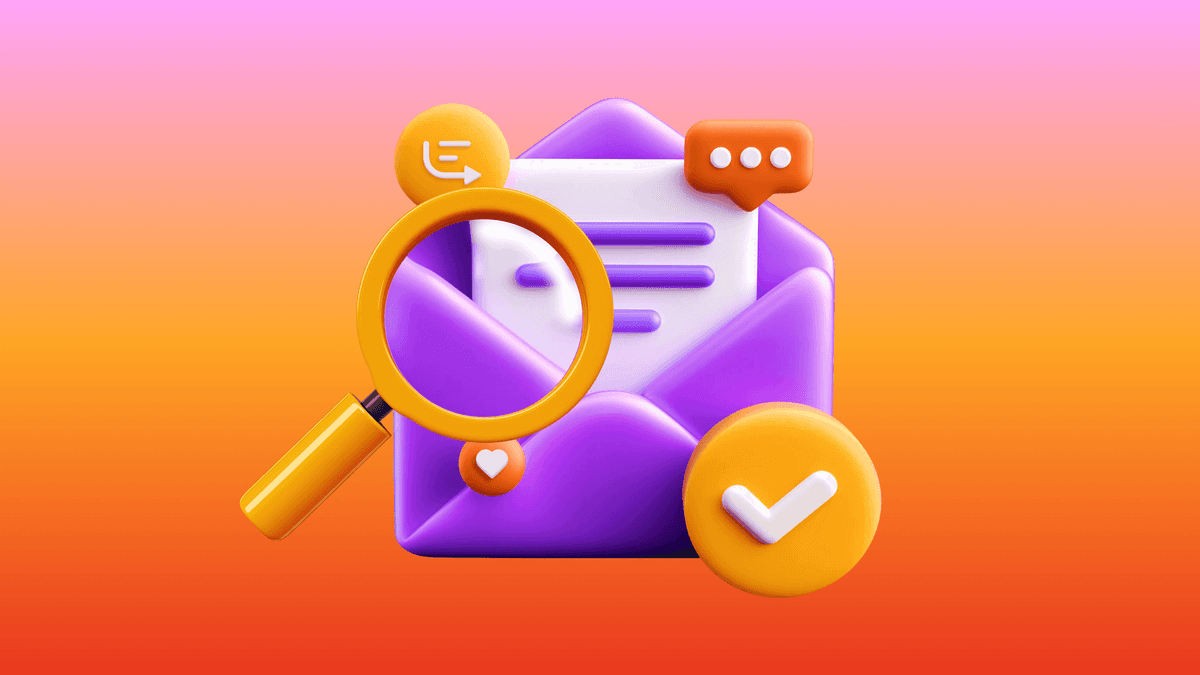
The new inbox reality: How iOS changes are reshaping email marketing

Aparna Prasad
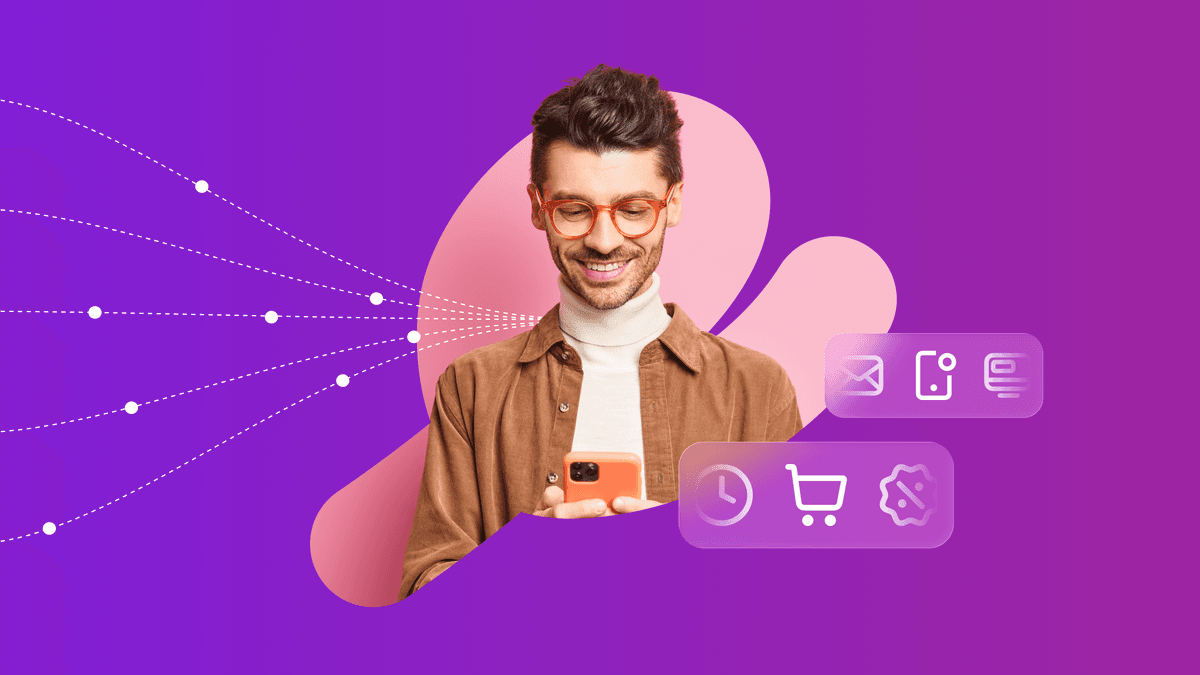
Experience optimization: Turning data insights into better journeys

Team Braze
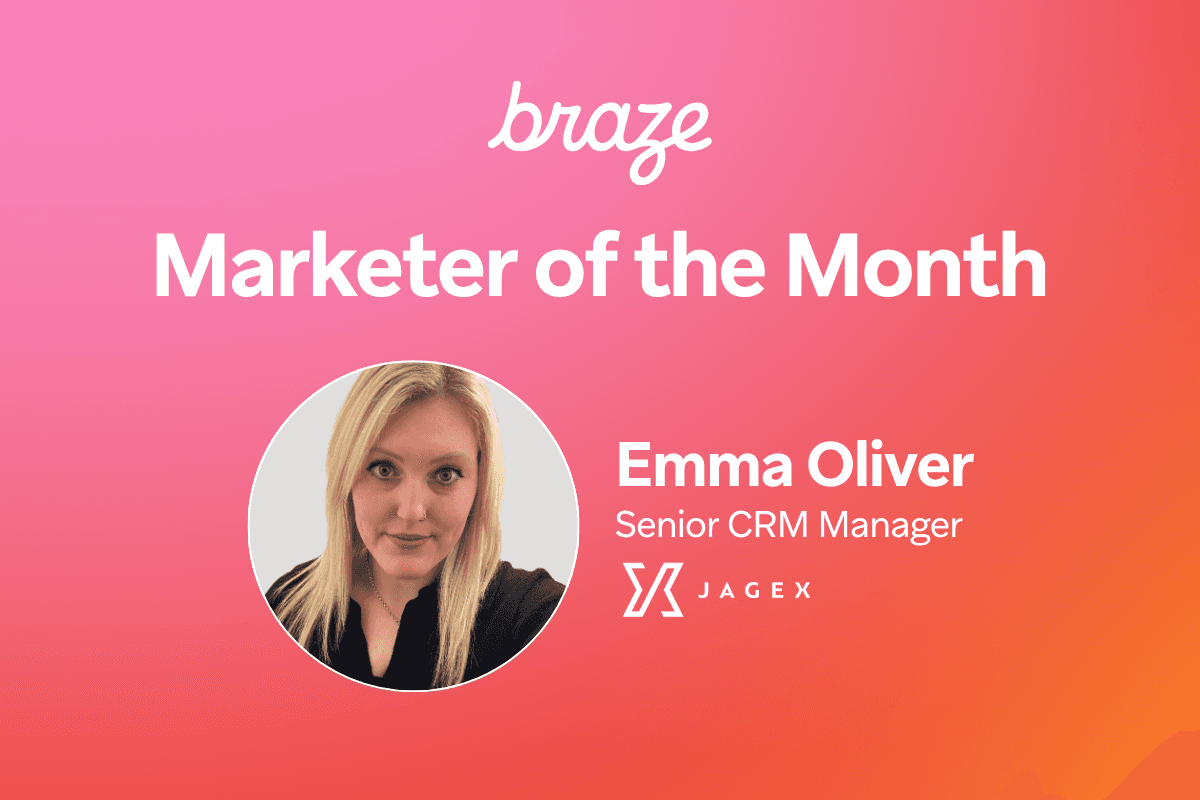
December 2025 Bonfire Marketer of the Month: Jagex’s Emma Oliver
